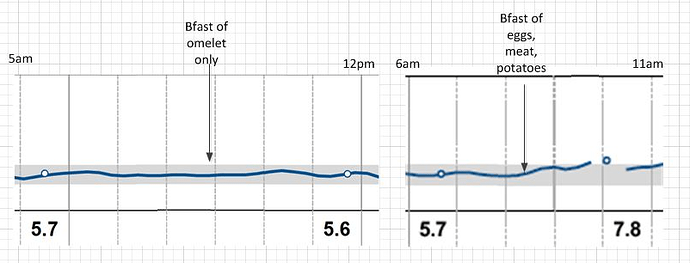The figures I’ve seen is that it adds a couple of percent RS based on total weight, not as percent of the carbs. I found this article claiming that more than half of the calories can be converted, but it gives no link to a study.
Frankly I don’t get this universal hate for carbs. It’s just as bad as the mainstream universal hate for fat. I’m with you as far as refined carbs are concerned, but not unrefined carbs from starchy vegetables.
In the end it comes down to a simple question: Is a ketogenic diet the optimal diet for all of us, or would it be more healthy to eat some carbs, provided they are in their natural form (starchy vegetables, legumes) and not refined? Our ancestors didn’t eat ketogenic all the time. If you believe that a paleo-diet is ideal, you’ll integrate some carbs.
I’m with Robb Wolf here: I think metabolic flexibility is a good thing, we’re built to eat some carbs (unprocessed, seasonal) and to alternate stretches with carbs (summer) and ketogenic stretches (winter). I don’t see any evidence that there is harm in eating some carbs for metabolically healthy people, as long as we stick to the pattern of our hunter-and-gatherer ancestors who mostly ate 15-20 percent carbs. Integrating the occasional carby meal might be more beneficial than going strict keto 100% of the time. After all, there is a consistent pattern that a little stress is beneficial, too much isn’t good, regardless of whether it’s stress from allergens, exercise, alcohol or lectins. Small amount will make your body more robust because it will learn how to react to those adverse substances. Why should carbs be different?
Of course someone in MetS should go strict keto in order to reverse it, but it’s a different story if you’re metabolically healthy. Maybe the sugar/insulin spikes we see in people on a strict keto diet are just there because their body has forgotten how to deal with carbs.

 I’m traveling a bunch at the start of the year and won’t be able to bring my RMR testing machine with me, but once things settle down I’m happy to help gather some more data on this. I’ll just have to work it around the rest of life.
I’m traveling a bunch at the start of the year and won’t be able to bring my RMR testing machine with me, but once things settle down I’m happy to help gather some more data on this. I’ll just have to work it around the rest of life.



